|
|
F-15I |
|
| |
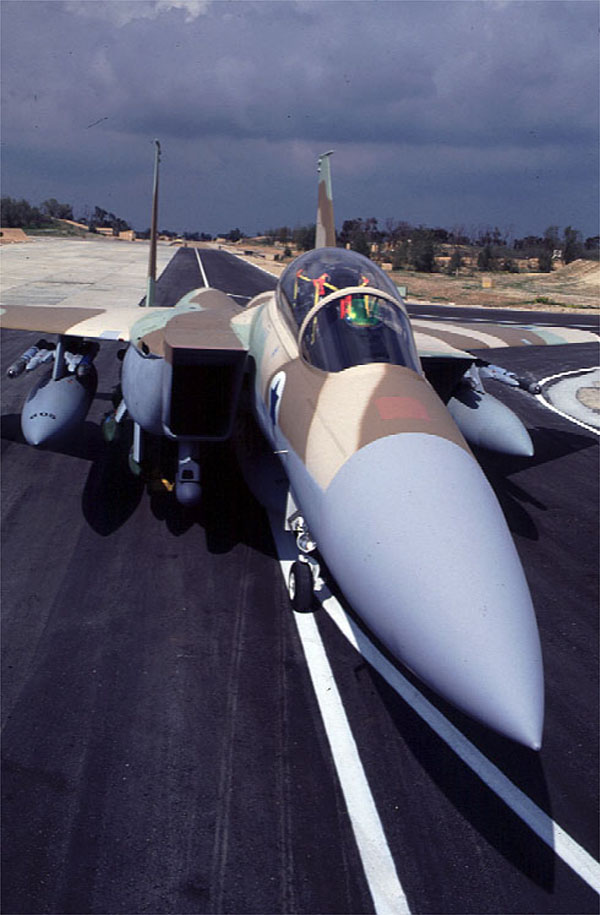
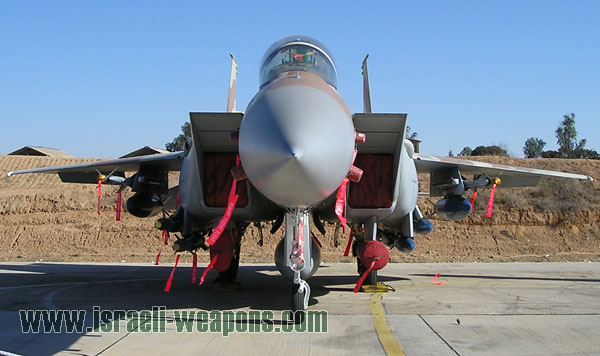
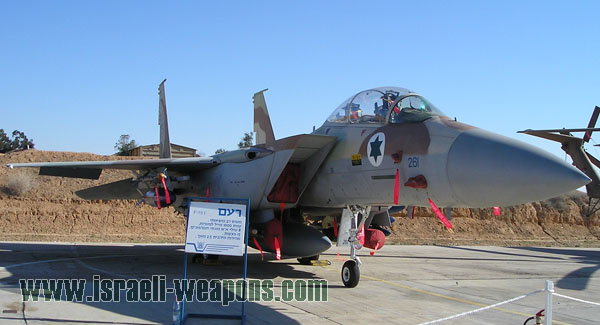
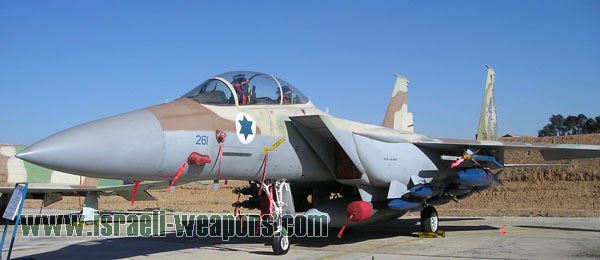
|
| |
| |
|
| |
| |
| |
A dual-role long range fighter for attack and interception. The plane - the best of its type in the Middle Eastern arena - entered service in January of 1998, and is the IAF's lead plane. The Ra'am is a special version of the F-15E Strike Eagle that was designed specifically for Israel by McDonnell Douglas (now Boeing). Its tremendous payload capacity, combined with its advanced systems, enable it to carry out depth attacks with a large weapons load, at long ranges, at low altitude, in all hours of the day and night and in any weather conditions. |
| |
|
| |
|
In Action
|
| |
Heyl Ha'avir chooses its fighter of the future: the Ra'am
In January of 1994 the F-15E was chosen as the IAF's fighter of the future, a role for which the F-16 and F-18 had also been vying for quite some time. Heyl Ha'avir decided to purchase 21 planes, at a price of just over $2 billion. These were basically E models that had been slightly modified, and marked 'F-15I' - with the 'I' standing for Israel. In 1995, Prime Minister and Minister of Defence Yitzhak Rabin approved the purchase of 4 more planes.
First test flight
In September of 1997 the first Ra'am - as the F-15I's are called in Hebrew - was completed at Boeing's assembly line in the US. An IAF team numbering about 30 people - including pilots, armaments officers, programmers and systems experts - worked hand in hand with the Americans, helping with logistical backup and supervising the development and production of the plane. On September 12th, the Ra'am carried out its first test flight, for defining its capabilities and testing its flight envelope. Among other elements tested were the plane's performance at speeds greater than Mach 2, and at maximum maneuver load at 9g. Two months later, a group of Israeli airmen went on a 6 week retraining course in an Air Force base in the United States.
Unveiling the first Ra'am
On November 6th 1997, Heyl Ha'avir received the first of its 25 Ra'am F-15I's in a rolling-out ceremony held at the Boeing plant in St. Louis, Mo. When the speeches were over, Minister of Defence Yitzhak Mordechai strode towards the plane - which had been painted in desert camouflage colors and carried AMRAAM and Python-4 missiles - and affixed a decal with the IAF insignia to the fuselage.
Simultaneously, General Eytan Ben Eliyahu, the IAF Commander, unveiled the IAF's 50-year jubilee logo. After the ceremony, the plane was taken to USAFB Eglin for a series of test flights.
The first two Ra'am planes land in Israel
On January 19th 1998 the first two Ra'am planes landed in Hatzerim Airbase. An audience of 3,000 had gathered at the base in order to watch the arrival of Heyl Ha'avir's most advanced fighters. The two Ra'am F-15I's flew over the spectators' heads, accompanied by two Baz F-15s and a pair of Phantoms. The planes, which were flown by American pilots, had taken off from the Boeing plant in St. Louis and flown directly to Britain, refueling in midair 5 times on the way. They then flew straight to Italy, and from Italy to Israel, with no further refueling.
The Minister of Defence, the IDF Chief of Staff, and the commander of Hatzerim Airbase strode toward the planes and affixed the IAF insignia and the jubilee logo. The planes were now officially in Israeli hands. |
| |
|
| |
|
Development
|
| |
Several modifications had been carried out in the Ra'am, in order to meet Heyl Ha'avir's unique needs and specifications. For instance - the plane is characterized by greater takeoff weight and flight range than the other F-15 models, and is equipped with unique systems manufactured by Israel's defence industries, including an EW suite designed and built by Elisra specifically for the F-15I. Due to the modifications made in it, the Ra'am is regarded as being the most advanced of the F-15 models. Like the F-15E, it is a tandem seater, with the pilot concentrating on flying the plane and releasing weapons, while the WSO controls the guided munitions from the moment of release until they hit the target.
The Ra'am's advanced systems include an APG-70 radar with terrain mapping capability. The sharp picture that the APG-70 provides, regardless of weather conditions and light, makes it possible to locate targets that are otherwise very hard to find - i.e. missile batteries, tanks and structures - even under such adverse conditions as complete fog cover, heavy rain or moonless nights.
Another important system that the plane is equipped with is the LANTIRN, which makes it possible to acquire targets and lock guided munitions on them, in both day and nighttime. The LANTIRN system is comprised of a navigation pod and a guidance pod. The navigation pod holds a FLIR night vision sensor and a terrain-following radar, that enable the plane to fly at high speed at low altitude and warn of approaching obstacles. The guidance pod houses a FLIR sensor for locating targets in nighttime and a laser designator. The FLIR sensor makes it possible to follow targets at long range, the laser marker is used with laser-guided munitions.
The Ra'am is capable of carrying 4½ tons of fuel in its internal tanks, conformal tanks, and detachable tanks. The armaments it carries are positioned so that there is almost no disruption of the plane's aerodynamic shape - and no impeding of its performance. These factors combine with others to enable the Ra'am to fly to an unprecedented distance, one which was previously attained only by much larger bombers: about 4,450 km. With midair refueling, the range can be extended further.
The Ra'am is capable of carrying a very wide range of weapons. It is equipped with a 6 barrelled Vulcan 20 mm. cannon, and can carry different kinds of air-to-air missiles for self defence. Since its primary function is the attack of quality targets, the Ra'am is designed to carry various types guided missiles and bombs, as well as iron bombs. All in all, the plane can carry 11 tons of munitions. |
| |
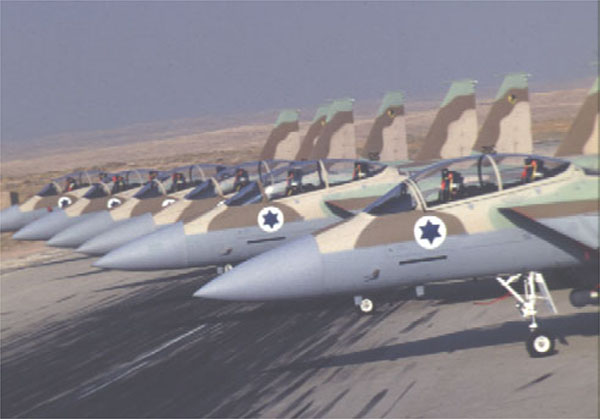
|
| |
| |
Primary Role |
Tandem seat attack plane |
Dimensions |
Wingspan: 13.5 m
Length: 19.43 m
Height: 5.63 m |
Capabilities |
Maximum speed: Mach 2.5 at high altitude,
1,482 kph at low altitude
Range: 4,450 km |
Weight |
Empty: 14,379 kg
Max. loaded: 36,750 kg |
Power Plant |
2 Pratt & Whitney F100-PW-229 engines with a max. thrust of 29,000 lb. each
|
Weapons |
20 mm. 6 barrelled cannon at wing root.
Air-to air missiles: Python 3, Python 4, Sidewinder, Sparrow and AMRAAM.
Varied air-to-ground missiles and guided bombs.
Total carry load capacity: up to 11 tons
|
|

|
